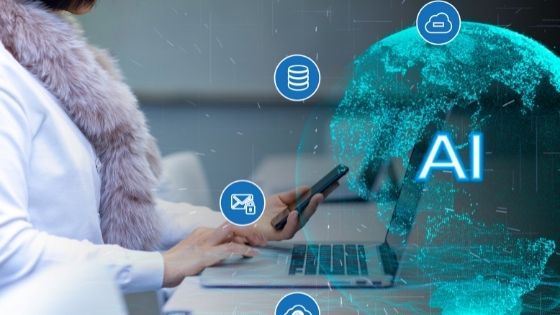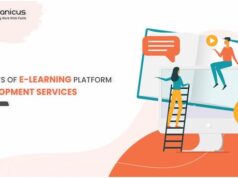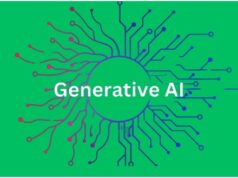AI and machine learning are emerging recently to alter educational institutions and tools and change its future. It is believed by most experts that the physical presence of instructors cannot be replaced. However, we also cannot deny the best practices which are introduced in the education sector by technology. In this article we will explore AI’s role in modern education from all aspects to determine its impact.


Collaboration between AI driven tools and teachers
At this point, AI is not an entirely new concept when it comes to education. It is already being applied mainly in tools that improve assessment systems and develop cognitive skills. The solutions are constantly changing and maturing, AI can fill gaps in both teaching and learning.
AI allows teachers and institutes to approach academics in a revolutionized manner. It streamlines administrative tasks, drives personalization, and efficiency. Teachers are granted the time and freedom to provide adaptability and understanding. This way students can get the best of both human and digital learning strategies.
Leveraging the best elements of teacher and machine, AI works in tandem to provide best student outcomes. It is also necessary for modern day students because they will be overcoming challenges of a technological future. If educational institutes make students more familiar with technology, they can be prepared to face things ahead.
Individualized and differentiated learning
Adjustment of classroom lessons to match each students’ individual academic needs has been a leading academic goal for years. But it is impossible for a teacher to manage if an average class has thirty pupils seeking attention. Applying AI solutions, however, does make it possible to employ differentiation when it comes to courses.
Several companies like Carnegie Learning and Content Technologies have developed intelligent digital platforms and instruction designs. Through AI they provide testing, learning, and feedback for students of all levels. They get to face challenges to assess their capabilities, identify any gaps in their knowledge level. When needed, the AI driven tools also help redirect the student to a new topic.
As artificial intelligence becomes sophisticated even further, it can be possible for it to read facial expressions. If there are signs that a student is struggling with a particular concept, it will be modified to suit their comprehensive level. It might now be currently viable for curriculums to be customized for each student’s need. But it will surely be possible with AI-powered methods soon enough.
Universal access to education
Another important factor which is made convenient by artificial intelligence is easy access to academic sources. Students from anywhere in the world can enroll in virtual courses and participate even if they speak a different language. Even those who have disabilities or impairments get equal academic opportunities through it.
There are also many useful tools which makes education easier for anyone around the globe. Such as free translator plugins for PowerPoint which create subtitles in real time for the teacher’s lecture. Or AssignmentMaker.ae which help students spend time on concepts taught in class rather than stress over unfinished projects.
Automated administrative tasks
Teachers spend a lot of hours grading tests and assignments. AI can help complete these tasks quickly and with less hassle. While also offering strategies and tools which can bridge learning gaps.
It is already possible for programs and software to grade tests containing multiple choice. But technology is also getting very near to assessing detailed student responses also. With AI automating time consuming tasks as much as possible, teachers are able to give individual attention to students. Moreover, admissions and enrollment procedures can also become more streamlined because of it.
Support and tutoring outside classroom
Many parents face genuine struggles when it comes to teaching their children at home. Whether they are at an elementary level or in high school, helping them understand difficult concepts is challenging. AI tools are an incredible solution to support students when they are facing trouble with test preparation or homework. Thanks to AI, studying and tutoring software has become even more advanced.
The access to these sort of tools is likely to rise in the coming years. For now, students at university level even can also get help for complex tasks like Dubai CIPD Assignment writing. Further applications ae still in developmental stages such as artificial intelligence mentors and smart academic methods. Teachers can also enhance their abilities through personal development programs and participate in online global conferences.
Augmented and virtual reality
AI further enables technologies related to it realize their potential in the education sector. Foremost in those technologies are virtual reality and augmented reality.
It is greatly interesting to learn about the battle of Waterloo by experiencing it rather than just reading about it. A teacher can explain the structure of a molecule much better with a VR created model of it. It might be an ironic logic, but AI actually makes education more natural, along with enjoyable and impactful.
Conclusion
A few decades later we would be looking back on our current classrooms as antiquated systems. People might even be discussing how students were forced to sit and focus on text for hours on end. The “Dark Ages” of learning are likely to be replaced soon by tools and methods that are far more efficient. And designed to extract responses from students having different intellectual levels and learning paces.
Before now, virtual learning was associated with plagiarism, isolation, low retention, low quality teaching aids, and unauthentic qualifications. But all that is rapidly changes as technology advances and makes every sector dependent on it. Educational institutes and professionals also need to participate in these changes to stay abreast of the times.
A specific advantage of online learning is that can be read, watched, or listened repeatedly. Which is a non-existent factor in physical lecture halls and classrooms. Any minor mistakes are open to scrutiny. Hence the quality of education provided there has to meet high standards. Although AI driven aids are still progressing, we are hoping to witness a transformed academic system in the near future.









